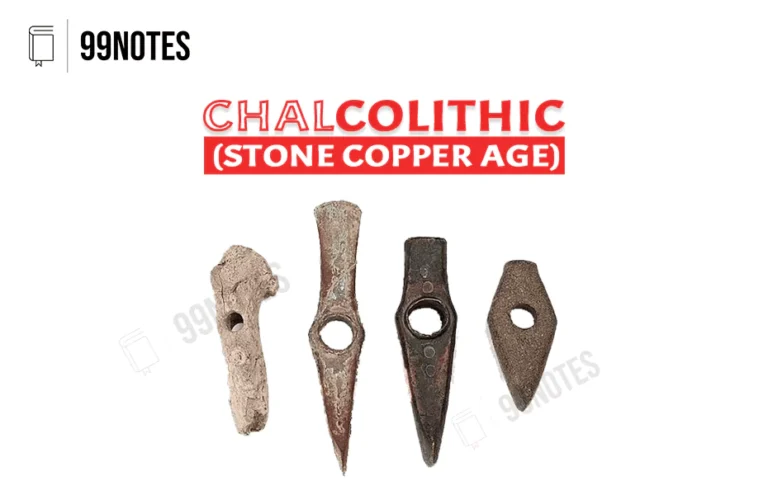Later Vedic Period Notes for UPSC IAS Exam
Later Vedic Period
The later Vedic period or post Vedic age extended roughly from 1000 B.C. to 600 B.C., during which some Vedic tribes had migrated from the ‘Sapta Sindhu’ region to the upper Ganga Valley and other adjacent areas. The history of the later Vedic period is based primarily on Vedic texts, which were compiled after the age of Rigveda.
- Use of Iron: The wide use of iron distinguishes the early Vedic phase from the later Vedic stage. This enabled the large-scale clearing of forests in the Ganga Plains. The technology of Iron smelting, however, was primitive.
- PGW Culture: The later Vedic culture is also known as Painted Grey ware culture (PGW) because of its inhabitants’ use of earthen bowls and dishes made of painted grey pottery.
- Sedentary lifestyle: The later Vedic phase marks the slow transition from a pastoral society to a sedentary agrarian society.
- Changes in social, political and economic structure: This phase witnessed several changes in their social, political, economic and religious structure.
PGW Full Form in History?
Full form of PGW in History is Painted Grey Ware culture.
Painted Grey Ware (PGW) Culture (1100-400 BCE)
- Painted Grey Ware (PGW) is a fine, smooth, and even-coloured grey pottery. PGW sites stretch over a large area, from the Himalayan foothills to the Malwa plateau and from Bahawalpur (Pakistan) to Kaushambi (Prayagraj).
- Other sites include hilly regions of Kumaon and Garhwal, Vaishali in Bihar, Lakhiyopur in Sind and Ujjain in Madhya Pradesh.

- The mature PGW phase at Jakhera has also given substantial evidence of iron implements used in agriculture like a sickle, ploughshare and hoe.
- The Painted Grey Ware (PGW) phase is followed by the Northern Black Polished Ware (NBPW), which is associated with the Mahajanapada period (600BCE onwards).

- Shelters– Structures found were wattle-and-daub and mud huts. These were constructed using unbaked bricks. For example, baked bricks were found at Hastinapura.
- Agriculture– Crops included rice, wheat and Barley. Double cropping was possibly practised. There is no significant evidence of irrigation facilities, but a few deep, circular pits outside the habitation area at Atranjikhera indicate kachcha wells. Animal husbandry was also practised.
Expansion of Vedic Culture in Later Vedic Period
The post Rig Vedic texts tell us that Aryans expanded from Punjab-Haryana over the whole of western UP covered by the Ganga-Yamuna Doab. The Vedic people succeeded in the second wave of their expansion due to the use of iron weapons and horse-drawn chariots.
- Gradually they moved towards the upper (Puru tribe) and middle portion (Panchalas) of the Doab.
- Towards the end of the later Vedic phase, around 600 BCE, the Vedic people spread from the Doab further east in Eastern UP and north Bihar.

- It occurs along with other pottery types such as plain grey ware, Black and Red Ware (BRW) and black slipped ware, which were perhaps used in everyday life.



 This Content is Locked
This Content is Locked




